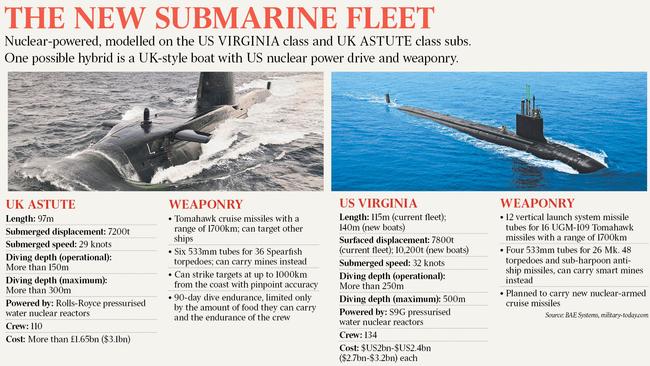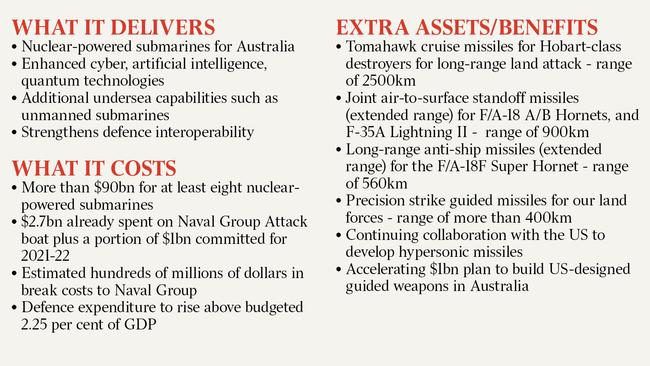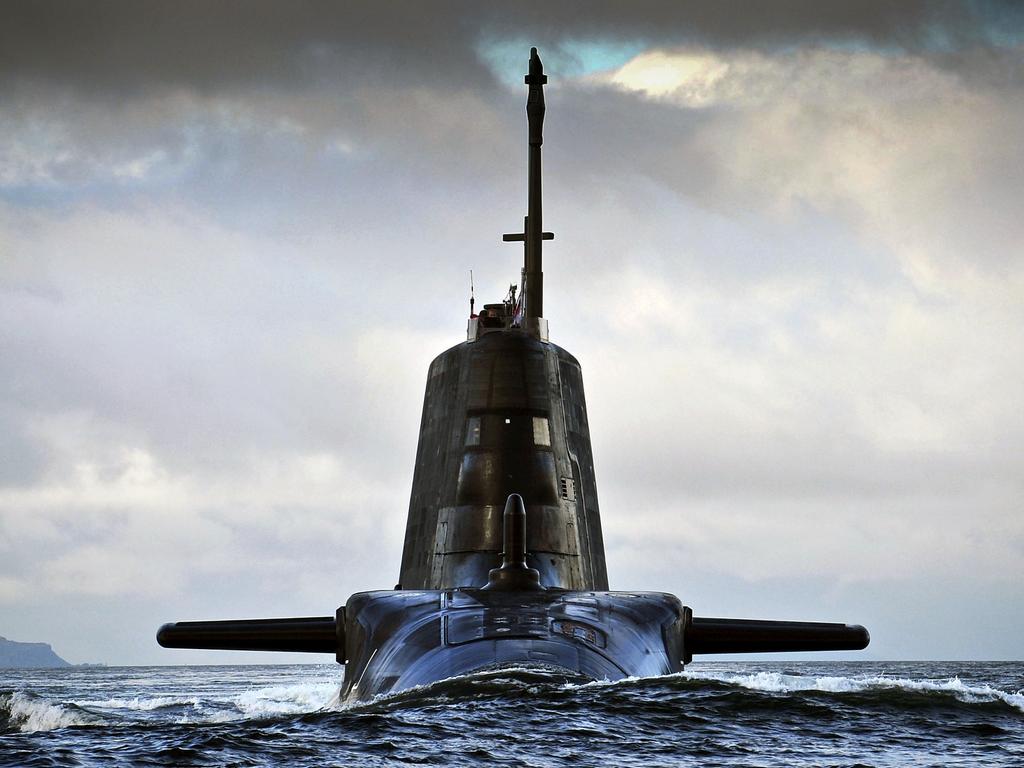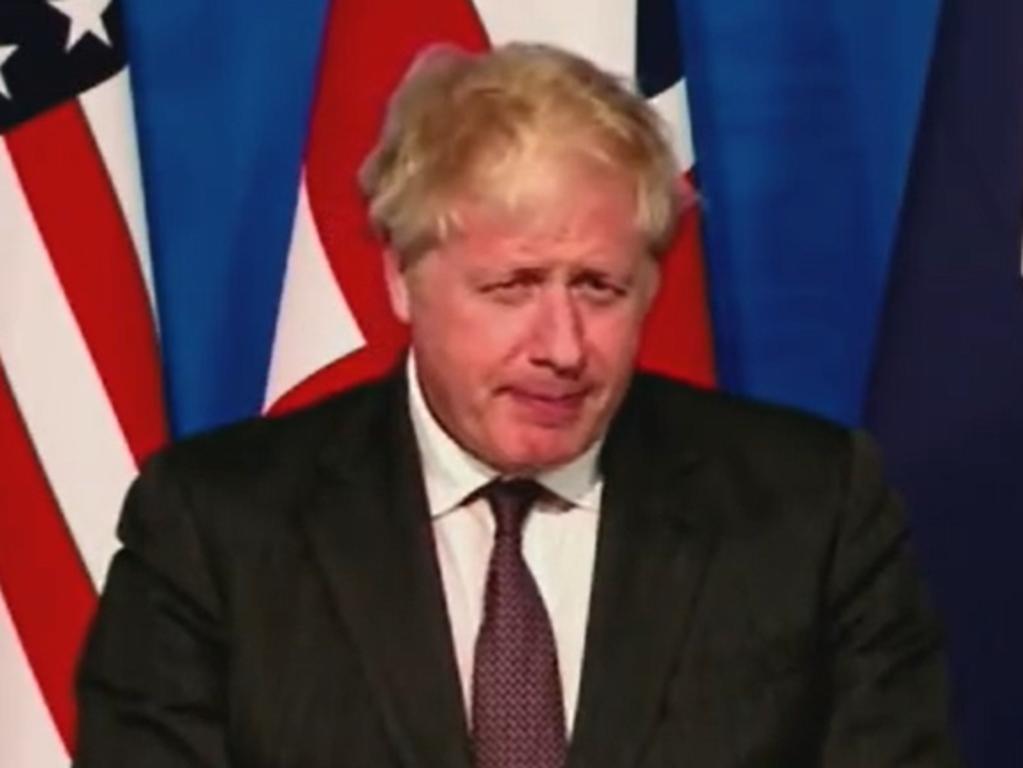AUKUS alliance: Nuclear sea zone will come at higher cost for Australia
When delivered, the submarines will be able to lie undetected for months in the South or East China Sea, offering huge advantages over conventional submarines.

Australia will spend billions of dollars more and wait longer to acquire eight nuclear-powered submarines after scrapping plans for 12 conventional subs and embarking on an even more complex national project.
The nuclear-powered boats, to be delivered with the support of the US and the UK, will transform the calculations potential adversaries must make about the nation’s ability to retaliate against an attack on its interests.
When delivered, the submarines will be able to lie undetected for months in the South or East China Sea, offering huge advantages over conventional submarines which must regularly come to periscope depth to recharge their batteries.
“Nuclear submarines have clear advantages, greater endurance, they’re faster, they have greater power, greater stealth, more carrying capacity,” Prime Minister Scott Morrison said.
But the nuclear boats will cost more – potentially a lot more – than the cancelled $90bn French submarines. They will also arrive “years” later, with the first not expected to enter service until the late 2030s, compared to a scheduled 2034 for the first of the French-designed boats.
The government’s decision to dump the Attack-class boats could cost the nation more than $3.5bn, with $2.67bn already sunk into the program, and another $1bn due to be paid this year. But Mr Morrison said the money was not wasted, declaring it was “a good investment for Australia‘s capability”.
The decision kicks off an 18-month process to decide whether Australia will acquire either the US Virginia-class fast-attack submarine, or the UK Astute-class boat, or a variant that incorporates elements of both.

Dennis Richardson, a former ASIO chief and ambassador to Washington from 2005-10, told The Australian the development of a nuclear submarine fleet “deserved bipartisan support for what will be a national enterprise every bit as challenging as the Snowy Mountains project after World War II”.
Mr Richardson, who led both the Defence and Foreign Affairs and Trade departments in 2012-17, said the “decision to go nuclear with our subs is, over the long term, the right one” and hailed AUKUS as a groundbreaking development. “Hopefully, this will mean an increase in the Defence budget which will be necessary to avoid cannibalising other capabilities to pay for the nuclear subs,” he said.
Experts said the now-scrapped French boats could not come close to matching the stealth, endurance and power of nuclear-powered submarines.
Retired Rear Admiral Peter Clarke – the only Australian to command both a nuclear and a diesel electric submarine – said nuclear-powered boats “can do everything a conventionally powered submarine can do, but they do it much better”.
Rear Admiral Clarke said cruise missile-armed nuclear boats would give Australia the ability to strike without warning against adversaries’ homelands, then disappear to fight another day. “It has the range, the speed, the flexibility, and it doesn‘t have to come up to periscope depth to charge it’s batteries every few days,” he said.
“The commander of a nuclear submarine does not have that constraint. He or she can decide when they want to take the submarine up to periscope depth.
“And the Tomahawk cruise missile is very effective and can be very accurately targeted, and that of course can be fired from anywhere off the coast.
“Once it fires, of course, it gives away it’s position. But a nuclear submarine can do 30 knots – nearly 60km an hour – and it can do it for a month if it wants to.”

The former Royal Navy officer, who commanded a British Trafalgar-class nuclear submarine and a British Oberon-class conventional sub before joining the Royal Australian Navy, said the decision also put Australia “at the top table” of nations with similar capabilities.
“Australia has a vast ocean interest, and any other nation with that sort of interest has nuclear submarines,” he said.
A 2013 report for the Centre for Strategic and Budgetary Assessments, a US think-tank, estimated a diesel-electric submarine such as the Australian Collins-class, sailing from Perth, could be “on station” for 11 days in the South China Sea. A nuclear sub could do so for 77 months.
“From a strategic perspective, the case for an Australian nuclear-powered submarine force is compelling, given their endurance, stealth at high speeds, and greater payloads,” the report says. “The US Virginia-class nuclear-powered fast attack submarine is more than twice the size of a Collins-class submarine, and has almost unlimited range, as well as greater speed and stealth.”
Former submarine commander Peter Briggs argued in a 2018 report for the Australian Strategic Policy Institute that nuclear-powered boats offered “a quantum leap in submarine capability and deterrent effect”, offering two to three times the speed of conventional subs, and “the ability to deploy and operate covertly”.
ASPI national security program director Michael Shoebridge said nations needed to think twice before threatening any nation which had nuclear-powered submarines.
He said the decision was about more than Australia’s own relationship with China.
“This is evidence to Beijing of what they just don’t want, which is a cohesive international response to deter their use of power,” he said.








To join the conversation, please log in. Don't have an account? Register
Join the conversation, you are commenting as Logout